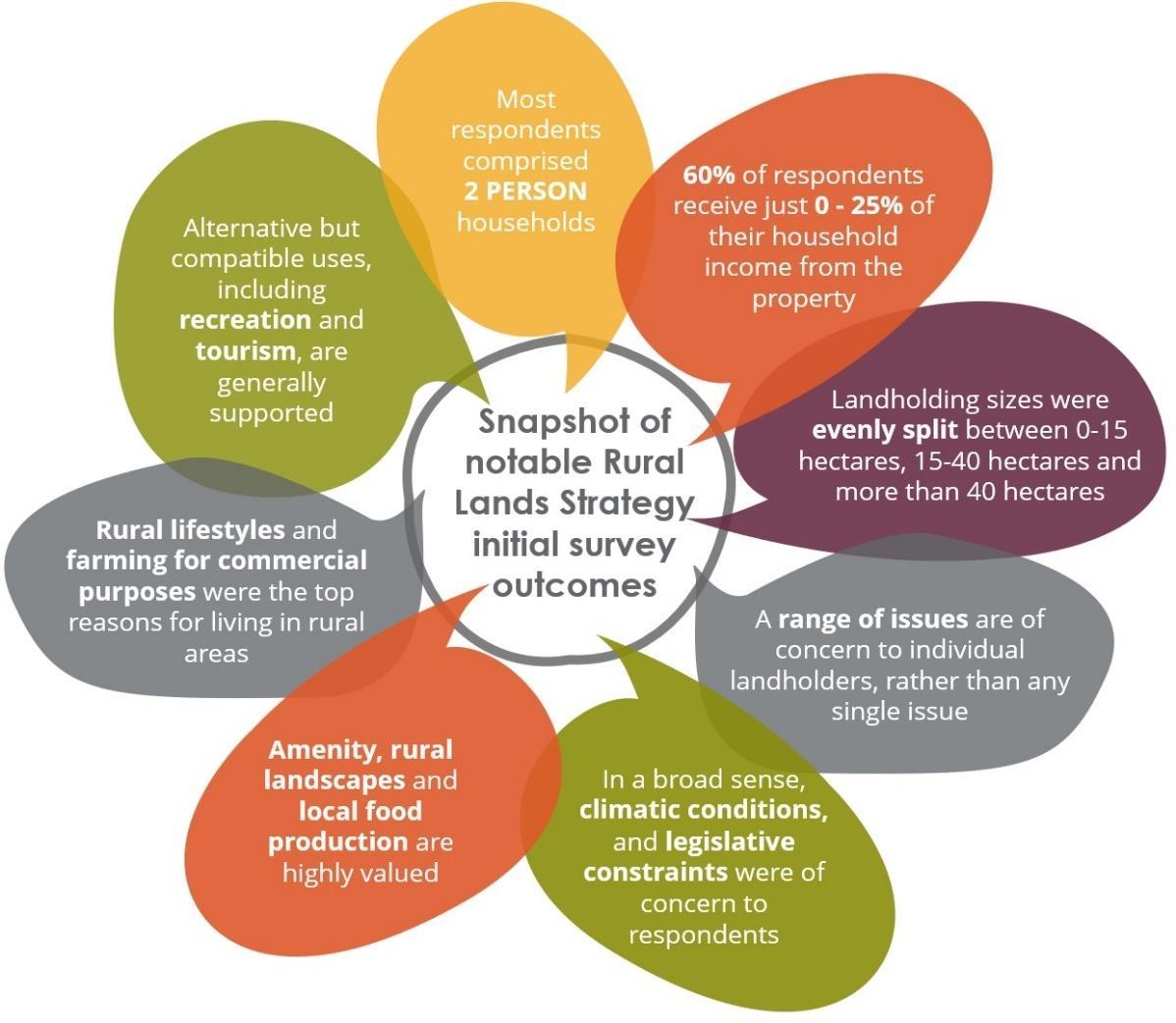
3 minute read
4. Project Consultation
Developing this Background Paper involved engagement with various stakeholders including State agencies, industry bodies, co-operatives, not-for-profits, landowners, primary producers and Council’s Working Group. This process was undertaken between June and November 2021 and proceeded the public exhibition of the Strategy.
In order to capture the variety of stakeholder interests, a number of consultation processes were undertaken including the following:
o review and research, including a range of Council documents, as well as those associated with State government agencies, including the NSW Agricultural Commissioner o review and research associated with industry, not-for-profit and related entities that are undertaking a wide variety of related work o videoconference, teleconference and face to face meetings with internal Council staff, State agencies, industry bodies, education institutions and not-for-profits associated with the agricultural sector o public survey relating to the use and future of rural lands which was promoted through Council’s news channels and via industry organisations.
These activities were initially undertaken to assist in developing information and an in-depth understanding of issues and opportunities associated with rural lands within the Clarence Valley. Following the identification of ‘key issues’ (further discussed in Section 8 of this document), secondary consultation was also undertaken which then tested the understanding of the key issues with many of the agencies, groups and industry bodies. The outcomes of these activities form the basis of this document and the subsequent Rural Lands Strategy.
Further insights are intended to be obtained through the process of adoption and exhibition of the Rural Lands Strategy.
4.1 Targeted consultation outcomes
A number of key insights have been drawn from the consultation process. While there are a number of industry or locality specific issues raised and discussed in detail at relevant points of this document, there are also a number of issues raised that highlight key trends and consistencies across rural lands more broadly. Key themes identified include:
o The Clarence Valley can be a leader in addressing and dealing with many key rural lands issues before they reach crisis point in the realm of planning solutions o Long history and importance of agricultural and rural pursuits in the LGA, and particularly through its connection to the Clarence River o Changing nature of rural activities, including intensification of farming, increasing lifestyle uses, desire for diversification into areas such as farm, food and nature-based tourism o Increasing diversification of agricultural industries, from traditional enterprises such as sugarcane, beef and dairy, through to more intensive and emerging industries such as berries, macadamias and cottage farming o Increasing recognition of sustainability, including soil health, productivity, water resources, biodiversity and a change climate
o Ongoing issues associated with land use conflicts and how these can or should be managed o Increasing barriers to entry or ability to upscale some agricultural pursuits as a consequence of land prices, planning restrictions and commodity markets o Resulting need to work more collaboratively and in a more connected way to facilitate consistent, accessible and informed advice to increasingly broad audiences o An aging rural population / farming workforce, meaning that there are more and varied ways that rural lands are being used and the next generations can maintain rural activities
A generally consistent message across all consultation was a strong collective appreciation and desire to enhance the LGA’s rural lands and to appreciate its role in the long-term prosperity of the area from triple bottom-line approach.
This sense of community value of the rural landscape and its associated uses included a desire to improve the viability of agricultural enterprises, but not to see the area overdeveloped or to lose its connection to its history and the environment more broadly.
There was recognition of the need for the land to continue to meet the needs of its current agricultural users, whilst also adapting to more diverse uses and functionality into the future to be viable. This direction took a variety of forms, from addressing planning controls through to value adding initiatives such as the potential for tourism and small footprint, high value production.
4.2 Landowner survey outcomes
In addition to the targeted consultation meetings, an initial project survey was also developed and placed on Council’s Clarence Conversations engagement portal between 25 June and 3 August 2021. While the survey was directed to rural land holders of the area, it was also available to the general public.
Just over 100 responses were received with a summary of notable findings below. Response graphs from respective survey outcomes are also provided in Appendix B.










